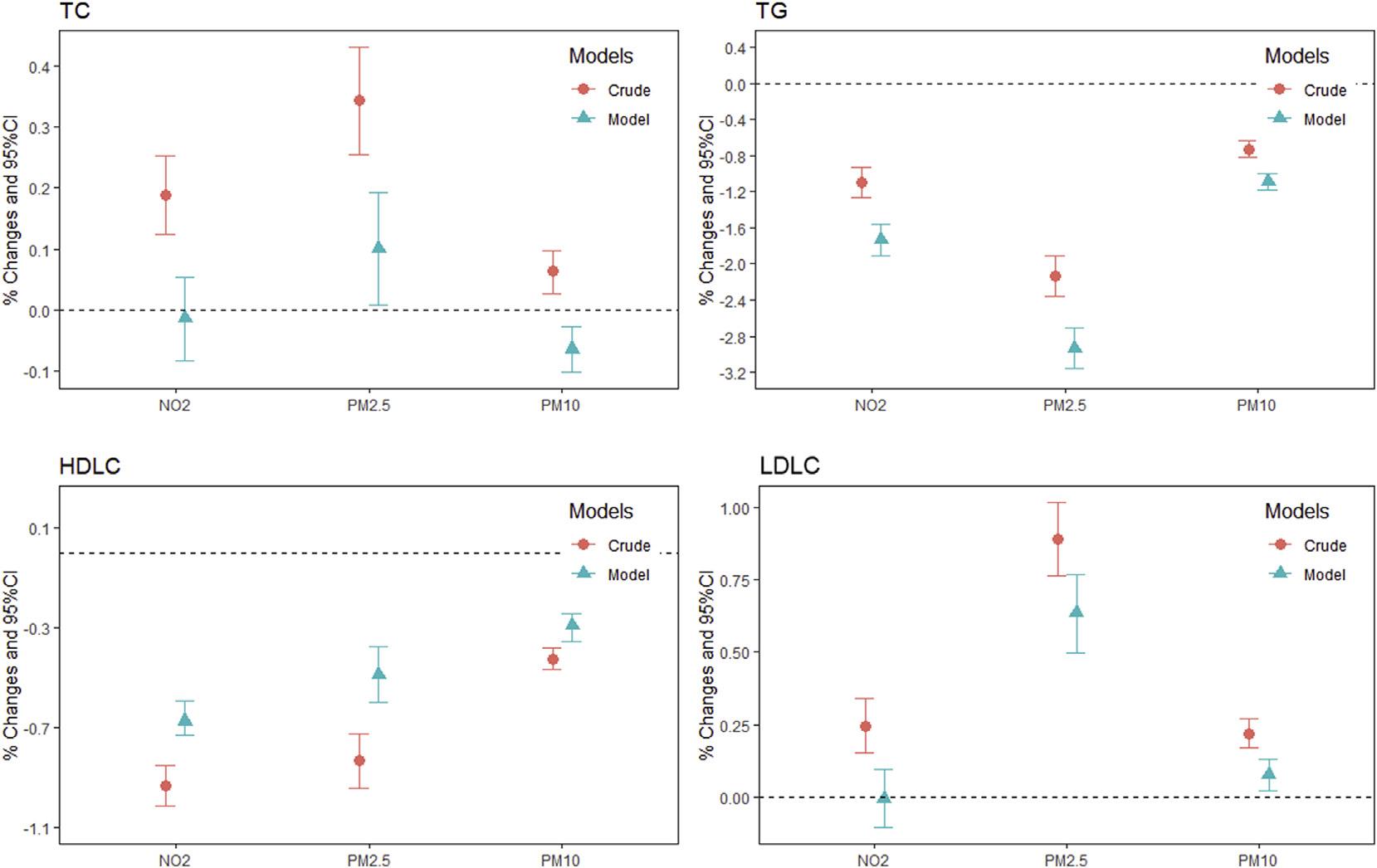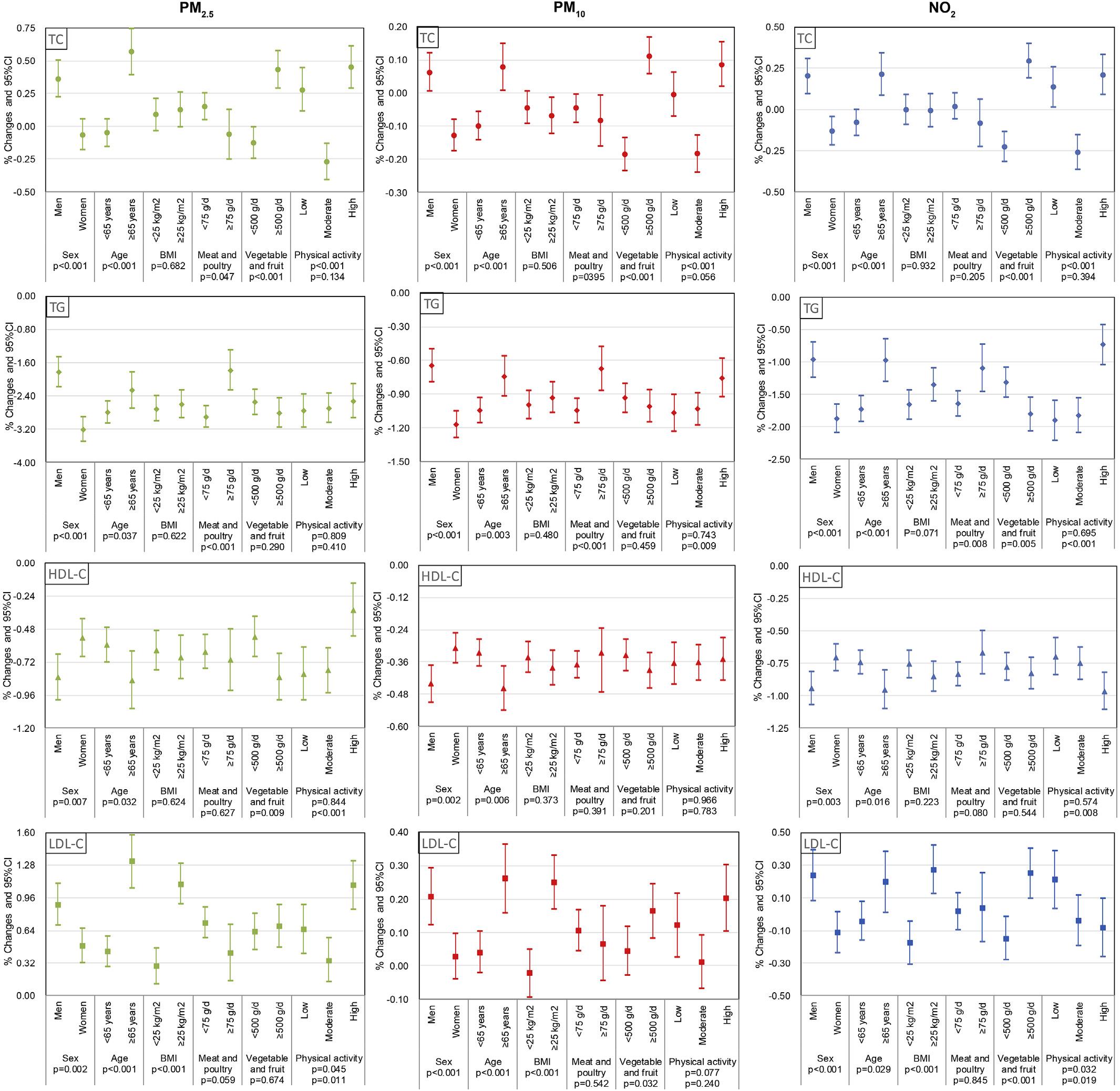Mao S, et al. Environ Pollut. 2020 Jan;256:113403.
Mao S, et al., conducted a study to demonstrate the correlation between air pollutants, blood lipids, and incidence of dyslipidemias in Chinese rural participants exposed to high-level air pollution using baseline data of The Henan Rural Cohort study.
Approximately 39,057 subjects from rural areas in China were included in this study. Using spatiotemporal model, the 3-year average exposure of air pollutants (PM2.5, PM10, NO2) was assessed. By using logistic and linear regression models, the association between air pollutants, blood lipids such as total cholesterol (TC), triglyceride (TG), and low-density lipoprotein cholesterol (LDL-C) and high-density lipoprotein cholesterol (HDL-C), and prevalence of dyslipidemias were investigated.
The 3-year average exposure concentrations of air pollutants such as PM2.5, PM10 and NO2 was 72.8 ± 2.3 µg/m3, 131.5± 5.7 µg/m3 and 39.1 ± 3.1 µg/m3, respectively. Generally, elevated air pollution exposure was correlated to higher TC and LDL-C, whereas lower TG and HDL-C. It was identified that each 1-µg/m3 elevation of PM2.5 was associated to 0.10% (0.07%-0.19%) rise in TC, 0.63% (0.50%-0.77%) rise in LDL-C, 2.93% (2.70%-3.16%) reduce in TG, 0.49% (0.38%-0.60%) reduce in HDL-C (Figure 1).
Stronger associations were found among subjects over 65 years. Additionally, a statistically significant connection of BMI on the correlation between air pollution and LDL-C was observed only in overweight participants. With respect to lifestyle characteristics, a less significant association of meat and poultry intake observed between air pollutants and TG (Figure 2).
It was also observed that 5.7% (95%CI: 3.7%-7.6%), 4.0% (95%CI: 2.1%-6.0%) and 3.8% (95%CI: 2.5%-5.1%) elevate in odds for hypercholesterolemia, hyperbetalipoproteinemia and hypoalphalipoproteinemia, respectively (Table 3).
Thus, superior PM2.5, PM10, and NO2 exposure were associated with changes in blood lipid levels and a higher risk of hypercholesterolemia, hyperbetalipoproteinemia, and hypoalphalipoproteinemia in Chinese rural participants. Especially, male and older participants were more perceptive of the adverse effects of air pollutants.

Figure 1: Associations between per 1-µg/m3 increment of air pollutions and blood lipid levels. Abbreviations: CI, confidence interval; TC, total cholesterol; TG, triglyceride; HDL-C, high-density lipoprotein cholesterol; LDL-C, low-density lipoprotein cholesterol

Figure 2: Interactions of sex, age, BMI and lifestyle characteristic on associations between per 1-µg/m3 increment of air pollutions and blood lipid levels
Table 1: Associations between per 1-µg/m3 increment of air pollutions and dyslipidemias


